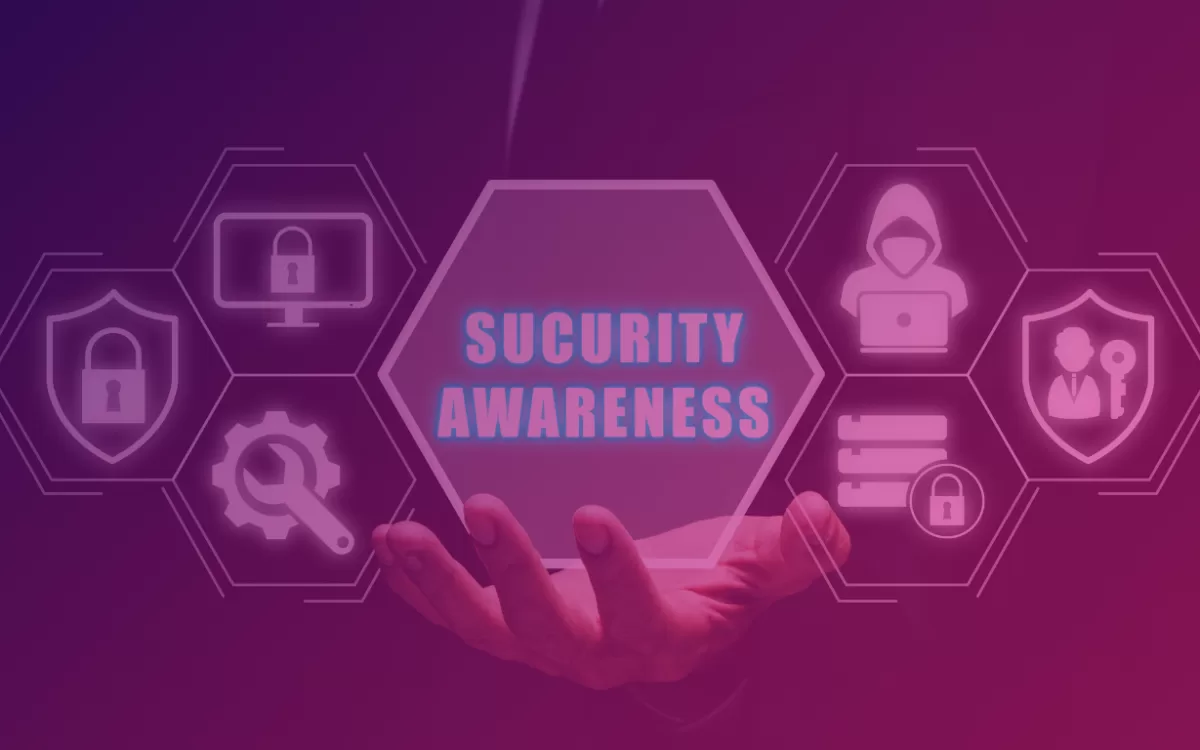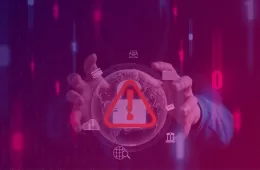
Cybersecurity Awareness Month 2025: Top Threats Every Business Should Prepare For
Every October, Cybersecurity Awareness Month serves as a reminder for organizations to adopt straightforward measures for online safety. In 2025, the globally adopted topic “Stay Safe Online,” spearheaded by the National Cybersecurity Alliance and CISA, emphasizes actionable measures for people, families, and enterprises.
The urgency is evident: Statista projects that worldwide cybercrime expenditures will increase from $9.22 trillion in 2024 to $13.82 trillion by 2028. In addition to financial loss, cybersecurity incidents result in disruption, penalties, reputational harm, and a decline in customer trust. The average cost of a data breach is now $4.88 million, indicating elevated risks and consequences. the question is: Are Organizations truly prepared to confront these escalating threats?
The cybersecurity landscape today – Top Threats
The World Economic Forum states that cybersecurity threats include various risks that endanger systems, networks, and data. Ransomware attacks are the primary organizational concern, accounting for 45% of responses, followed by cyber-enabled fraud, including phishing and business email compromise at 20%, and supply chain disruption at 17%. Additionally notable risks include malicious insiders 7%, disinformation 6%, and denial-of-service DDoS attacks 6%. The threat landscape is perpetually changing, with these dangers capitalizing on both technical vulnerabilities and the human element, highlighting the necessity for enhanced awareness and proactive defenses.
Ransomware:
Ransomware encrypts files and solicits payment for their decryption, presenting significant threats to companies. Employing robust encryption may result in data loss, financial detriment, and reputational damage. As cyberattacks become increasingly common and complex, stringent security measures are essential safeguards. The 2017 WannaCry attack was a significant incident that exploited Windows vulnerability, infecting more than 200,000 systems across 150 countries. The UK’s National Health Service saw significant impact, with over 70,000 devices hacked and roughly 19,000 appointments canceled.
Cyber-enabled fraud:
Cyber-enabled fraud includes techniques such as phishing, business email compromise, and vishing, when perpetrators imitate reputable individuals or entities to mislead victims into divulging critical information or transferring payments. These incidents leverage both behavioral elements such as trust and urgency and technical weaknesses, such compromised systems. Between 2013 and 2015, a significant incident involved attackers impersonating Quanta, a supplier for Google and Facebook, resulting in the issuance of $100 million in fraudulent bills. Both corporations remitted payment prior to the revelation of the scam; the offenders were subsequently arrested in Lithuania, extradited to the United States, and approximately $50 million was recovered.
Supply chain disruption:
Supply chain disruption in cybersecurity refers to unanticipated events that compromise the flow of software, services, or digital infrastructure across interconnected networks. Causes may include cyberattacks on vendors, compromised software updates, ransomware incidents, or geopolitical restrictions on technology providers. A notable example is the 2020 SolarWinds breach, where attackers exploited trusted software updates to infiltrate thousands of organizations. These incidents revealed the vulnerabilities of digital supply chains and compelled companies to strengthen resilience strategies through vendor risk management, zero-trust frameworks, and continuous monitoring.
Insider Threats
Insider threats arise when employees or trusted partners exploit their access, either deliberately or accidentally, jeopardizing data integrity. Motivations vary from financial profit to negligence. And the risks include data leaks, operational disruptions and reputational damage. Organizations must implement least-privilege access, conduct continued monitoring, and provide awareness training. A significant incident included Capital One, when a former AWS developer took advantage of a misconfigured firewall to obtain data from more than 100 million clients. Despite the absence of stolen credit card details or login credentials, the breach incurred a cost of $150 million. The perpetrator even boasted about her actions online prior to her capture and indictment.
Disinformation:
Disinformation refers to the deliberate creation and spread of false or misleading information with the intent to deceive, manipulate perception, or influence behavior. Unlike misinformation, which may be shared unintentionally, disinformation is coordinated and often amplified through digital platforms, bot networks, or compromised accounts. In the cybersecurity landscape, disinformation is increasingly weaponized to damage enterprise reputation, manipulate markets, and erode stakeholder trust. For example, campaigns that circulate fabricated breach reports or altered content can trigger financial losses, regulatory scrutiny, and operational disruption.
For organizations, the risk lies in both external disinformation campaigns targeting their brand and internal misuse of data that can fuel false narratives. This makes information integrity a critical component of cyber resilience.
Denial of Service Attacks :
DoS and DDoS attacks overwhelm systems with massive traffic, making servers or websites inaccessible. Such disruptions cause financial losses, customer dissatisfaction, and reputational damage. Common defenses include traffic filtering, rate limiting, and intrusion prevention systems.
In May 2025, Cloudflare mitigated one of the largest recorded DDoS attacks, peaking at 7.3 Tbps and generating 37.4 TB of traffic in just 45 seconds, the equivalent of nearly 10,000 HD movies. Using vectors such as UDP floods, NTP reflection, and Mirai botnets, the attack originated from over 122,000 IPs. Thanks to Cloudflare’s automated protections, the targeted hosting provider remained online.
Best practices for organizations to stay safe:
Protecting your organization from cyber-attacks requires proactive strategies. The subsequent recommendations apply to both individuals and businesses, enhancing cyber safety at all levels:
Robust Passwords:
Intricate, distinctive passwords are crucial to avert illegal access. Utilizing identical passwords compromises the security of numerous accounts. Password managers facilitate the creation and secure storage of robust passwords.
Multiple-factor Authentication:
Incorporating an additional element, such as SMS codes or biometric verification, mitigates the majority of automated attacks. Microsoft indicates that multi-factor authentication diminishes breach threats by more than 99%.
Software Updates:
Attackers exploit unaddressed vulnerabilities. Frequent updates to systems and applications promptly mitigate vulnerabilities and diminish exposure.
Emails caution:
Phishing continues to be a predominant concern. Verify senders, examine links, and treat unexpected attachments with caution to prevent malware or credential compromise.
Regular Backups:
Backups safeguard against hardware malfunctions or ransomware attacks. The 3-2-1 rule (three copies, two media, one offsite) guarantees resilience. Conduct frequent test restorations.
Employee Training and awareness:
Human error frequently represents the most vulnerable aspect. Educating staff to identify phishing attempts and adhere to standards enhances security measures.
Access Limits:
Implementing the principle of least privilege grants users only the necessary access required for their tasks. This mitigates the consequences of account breaches or internal exploitation.
Encryption:
Securing data in transit and at rest preserves sensitive information from interception or theft. In without it, data becomes vulnerable.
Incident Response:
Breaches continue to occur. An established incident response strategy with defined procedures mitigates risks, guarantees adherence, and maintains trust.
Cybersecurity Awareness Month 2025 serves as a reminder that, although technology offers protection, humans are the primary line of defense. Due to the prevalence of all the threats mentioned, no individual is exempt, making awareness and fundamental best practices imperative. By cultivating a culture of cyber safety, organizations and individuals may transcend annual reminders and establish “online safety” as a daily practice.








